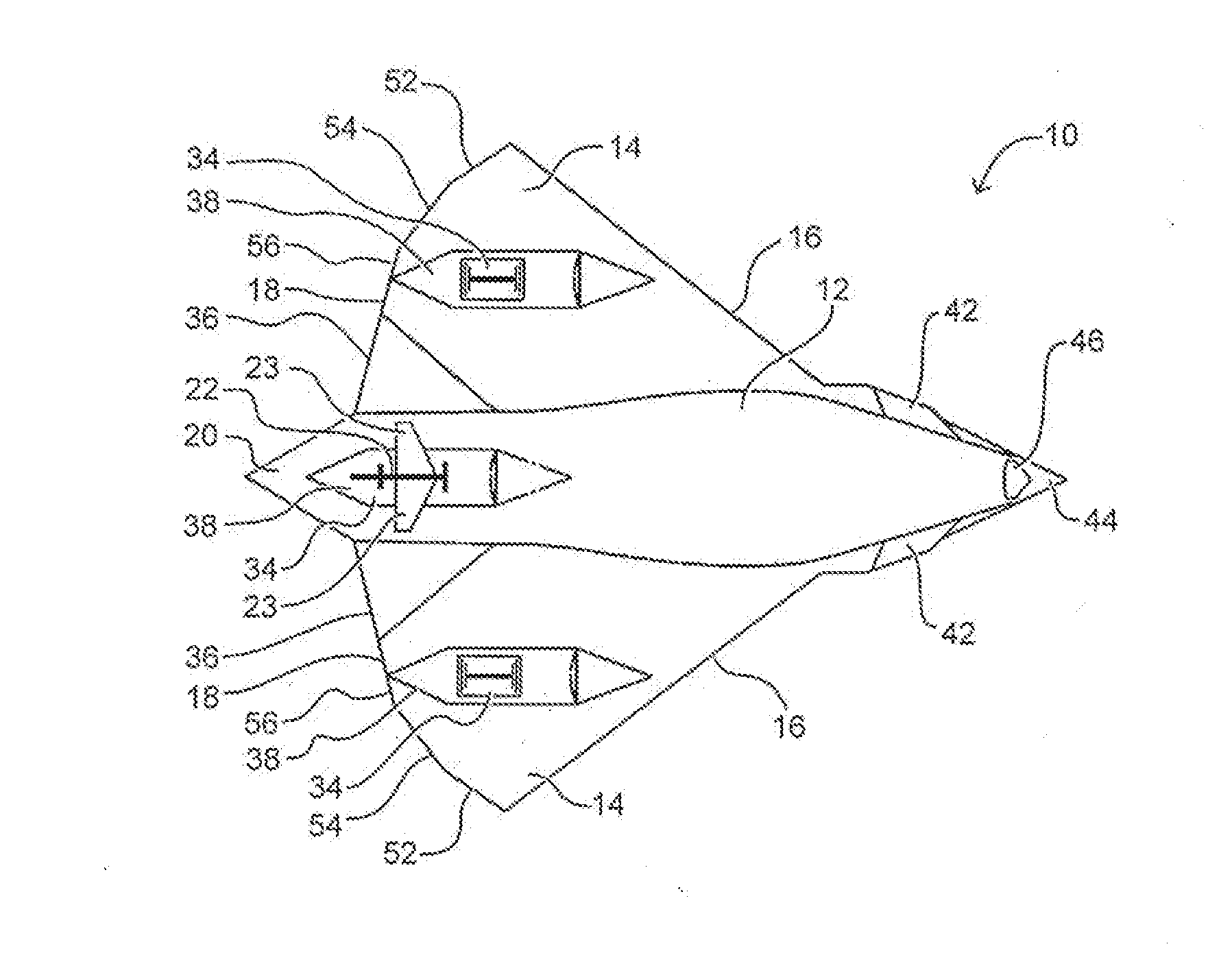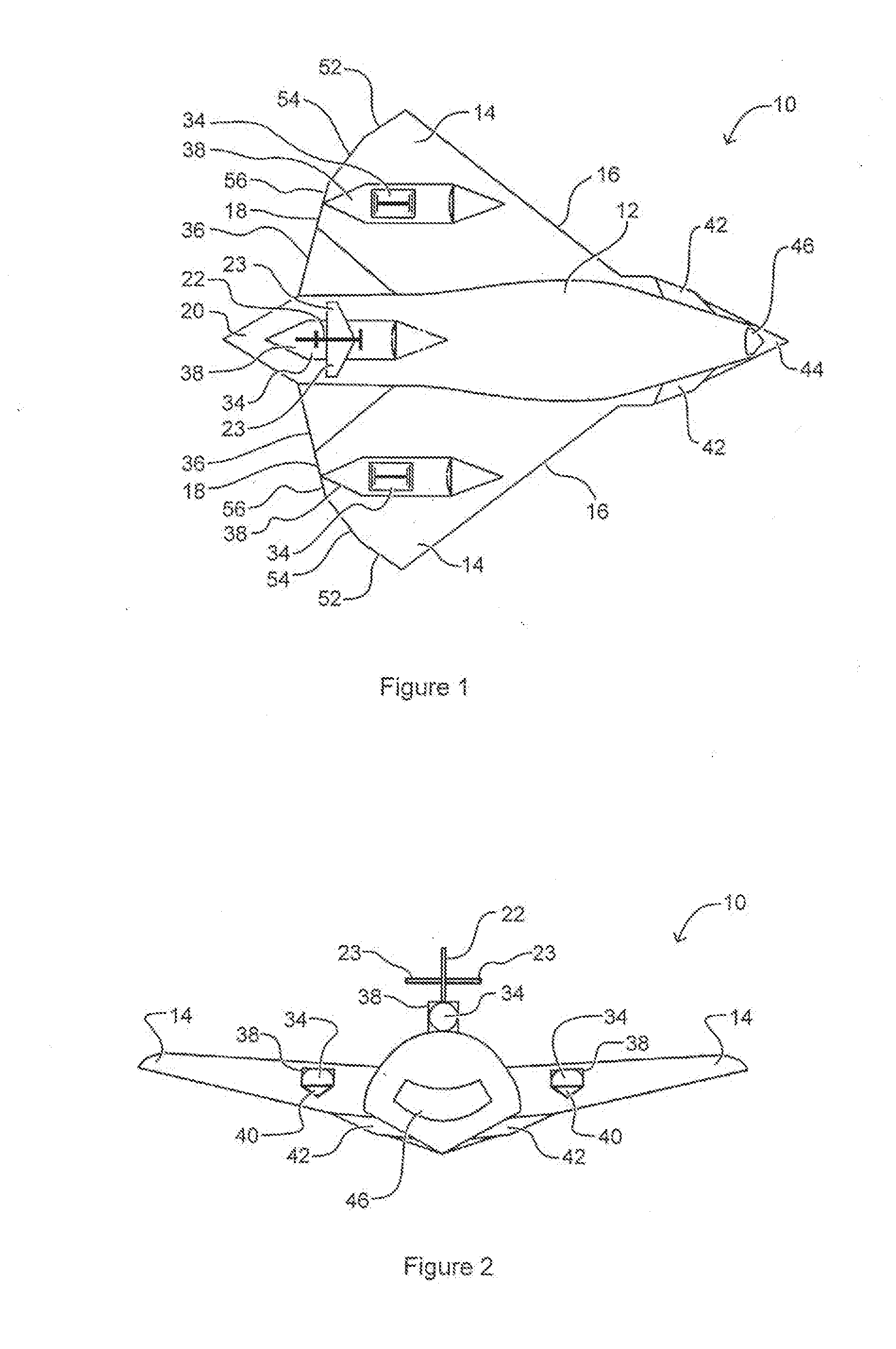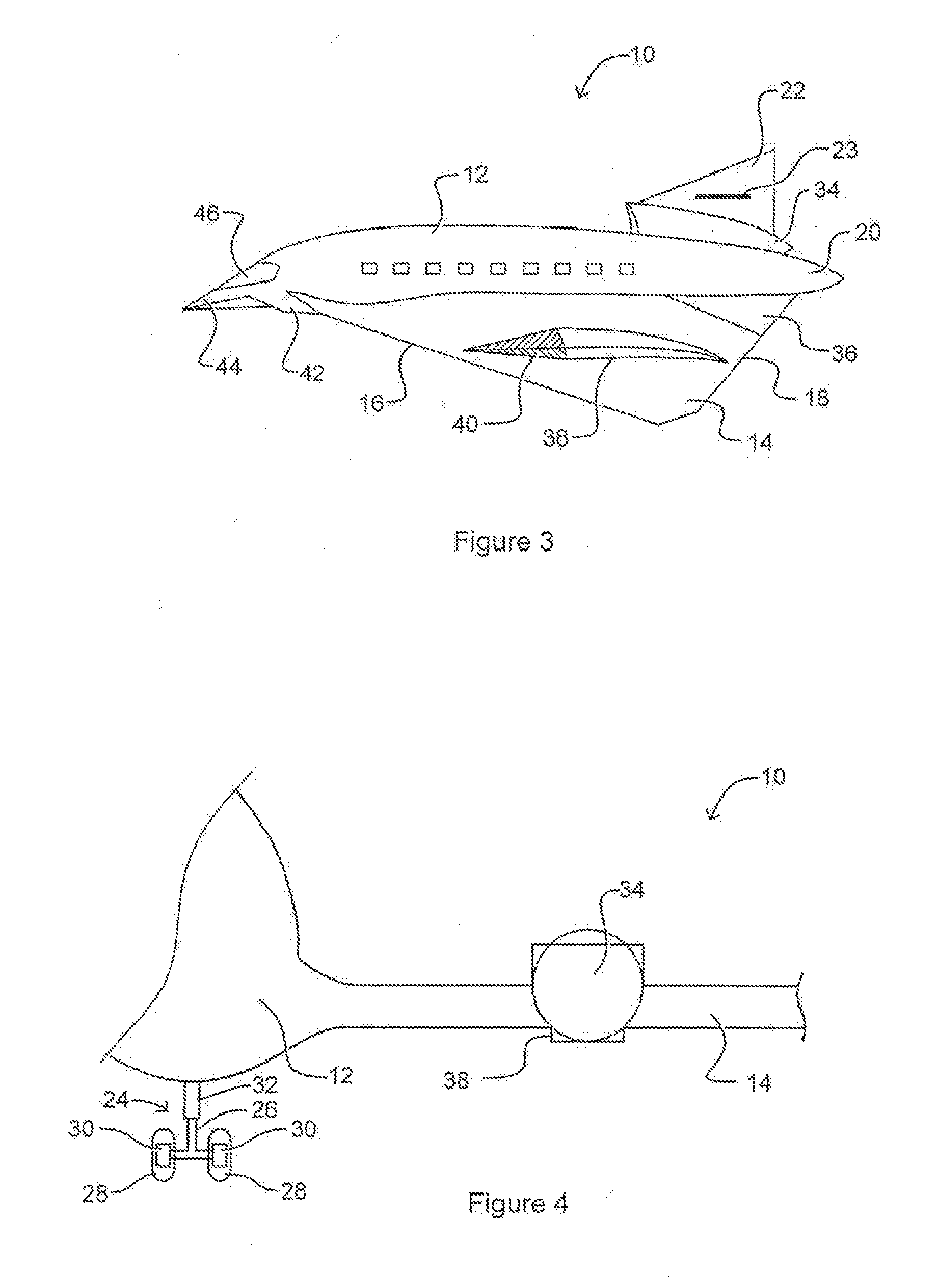Aerospace plane system
a technology for space planes and aircraft, applied in the field of space planes, can solve the problems of reducing aircraft range and payload capacity for a given fuel load, affecting the flight of aircraft, and affecting the flight of aircraft, and achieve the effect of successful engine relighting
- Summary
- Abstract
- Description
- Claims
- Application Information
AI Technical Summary
Benefits of technology
Problems solved by technology
Method used
Image
Examples
Embodiment Construction
[0041]Referring to FIG. 1, an aerospace plane 10 has an elongate body 12 supporting a pair of wings 14, 14. Each of the pair of wings 14, 14 has a leading edge 16 and a trailing edge 18. The pair of wings 14, 14 is adapted to extend away from the elongated body 12 in opposing directions. The pair of wings 14, 14 have an approximate triangular shape with the hypotenuse of each wing 14, 14 aligned essentially parallel with the elongated body 12. Each of the pair of wings 14, 14 is a mirror image of one another. Each of the pair of wings 14, 14 angle backward and outward from the elongated body 12. The elongated body 12 has a rear end 20 and a tail 22. Each of the pair of wings 14, 14 is widest as it approaches the tail 22. The tail 22 extends upward from the elongated body 12 approximate the rear end 20. The tail 22 also extends away from a rear end 20 of the elongated body 12. The tail 22 can include at least one stabilizer 23. A pair of stabilizers 23, 23 is depicted in FIGS. 1 and ...
PUM
 Login to View More
Login to View More Abstract
Description
Claims
Application Information
 Login to View More
Login to View More - R&D
- Intellectual Property
- Life Sciences
- Materials
- Tech Scout
- Unparalleled Data Quality
- Higher Quality Content
- 60% Fewer Hallucinations
Browse by: Latest US Patents, China's latest patents, Technical Efficacy Thesaurus, Application Domain, Technology Topic, Popular Technical Reports.
© 2025 PatSnap. All rights reserved.Legal|Privacy policy|Modern Slavery Act Transparency Statement|Sitemap|About US| Contact US: help@patsnap.com



